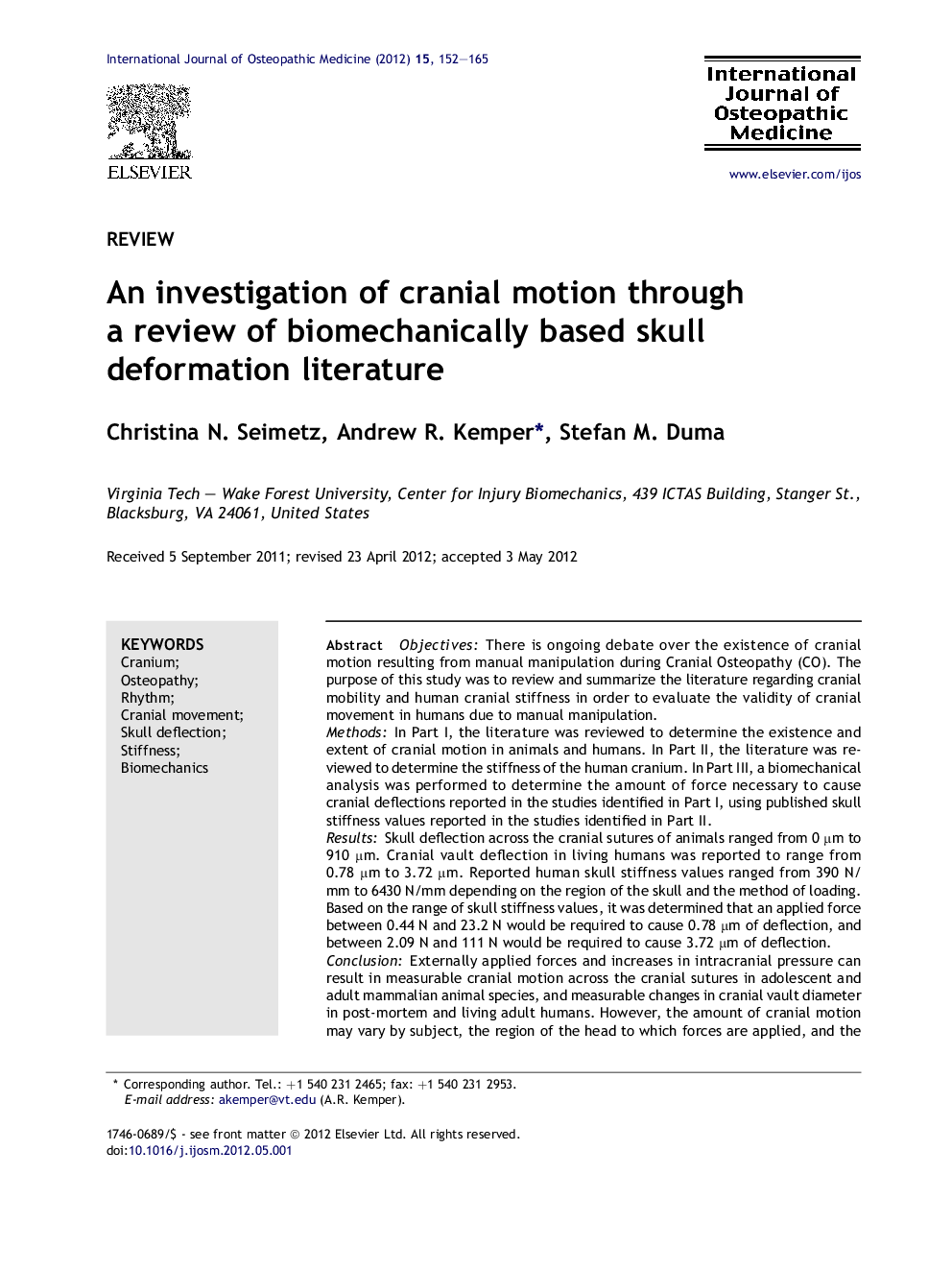| کد مقاله | کد نشریه | سال انتشار | مقاله انگلیسی | نسخه تمام متن |
|---|---|---|---|---|
| 2618697 | 1563002 | 2012 | 14 صفحه PDF | دانلود رایگان |

ObjectivesThere is ongoing debate over the existence of cranial motion resulting from manual manipulation during Cranial Osteopathy (CO). The purpose of this study was to review and summarize the literature regarding cranial mobility and human cranial stiffness in order to evaluate the validity of cranial movement in humans due to manual manipulation.MethodsIn Part I, the literature was reviewed to determine the existence and extent of cranial motion in animals and humans. In Part II, the literature was reviewed to determine the stiffness of the human cranium. In Part III, a biomechanical analysis was performed to determine the amount of force necessary to cause cranial deflections reported in the studies identified in Part I, using published skull stiffness values reported in the studies identified in Part II.ResultsSkull deflection across the cranial sutures of animals ranged from 0 μm to 910 μm. Cranial vault deflection in living humans was reported to range from 0.78 μm to 3.72 μm. Reported human skull stiffness values ranged from 390 N/mm to 6430 N/mm depending on the region of the skull and the method of loading. Based on the range of skull stiffness values, it was determined that an applied force between 0.44 N and 23.2 N would be required to cause 0.78 μm of deflection, and between 2.09 N and 111 N would be required to cause 3.72 μm of deflection.ConclusionExternally applied forces and increases in intracranial pressure can result in measurable cranial motion across the cranial sutures in adolescent and adult mammalian animal species, and measurable changes in cranial vault diameter in post-mortem and living adult humans. However, the amount of cranial motion may vary by subject, the region of the head to which forces are applied, and the method of force application. Given that the forces required to generate reported cranial deflections in living humans are within the range of forces likely to be used during CO, it is reasonable that small amounts of cranial deflection can occur as a result of the forces applied to the skull during CO.
Journal: International Journal of Osteopathic Medicine - Volume 15, Issue 4, December 2012, Pages 152–165